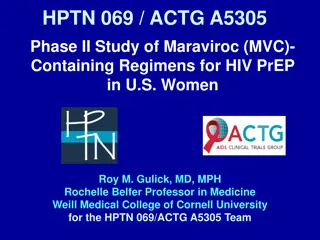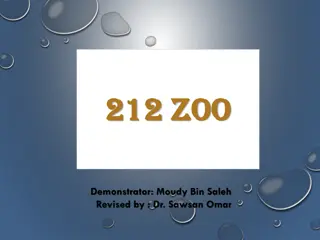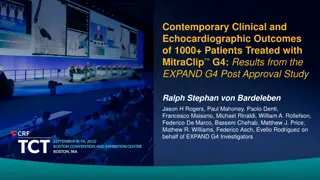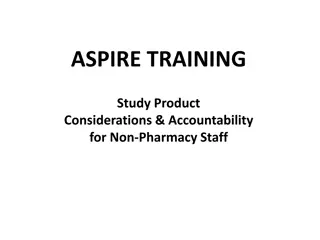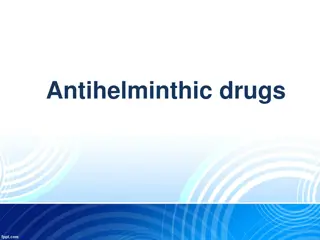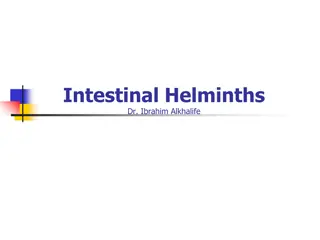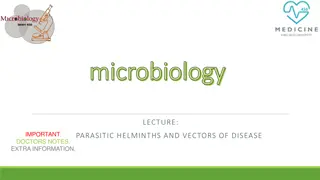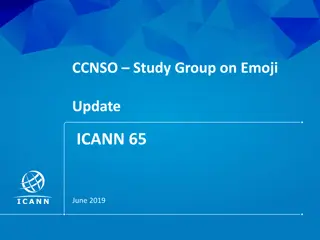Understanding Helminths and Immunomodulation: A Comprehensive Study
Helminths, parasitic organisms affecting a large part of the global population, can modify the immune response through immunomodulation. This research delves into the interaction between helminths, microbiome, and immune response, exploring the effects on macrophages, alternative activation, and the potential alterations in the microbiome. Experimental approaches aim to establish models of coinfection with Trichinella spiralis and murine norovirus, investigating the dependencies between microbiome and immune response in the context of helminth infections.
Download Presentation

Please find below an Image/Link to download the presentation.
The content on the website is provided AS IS for your information and personal use only. It may not be sold, licensed, or shared on other websites without obtaining consent from the author. Download presentation by click this link. If you encounter any issues during the download, it is possible that the publisher has removed the file from their server.
E N D
Presentation Transcript
Presented by Daren Ginete
Outline Helminthsand immunomodulation Research question Microbiome Trichinella and MNV CW3 Figures 1-3 Alternative Activation of Macrophages Figure 4 Summary
What are helminths? Parasites characterized by elongated, flat, or round bodies Affects more than 1/3 of world s population living under poverty Heavy infections can cause abdominal pain, diarrhea, blood loss, growth defects Can modify immune response (immunomodulation) WHO, 2011 Hookworm Ascaris Whipworm
Helminths and immunomodulation THE BAD THE GOOD McSorley and Maizels, 2012
Research Question ? IMMUNE RESPONSE X Adapted from McSorley and Maizels, 2012
Helminths, microbiome, and immune response Helminth infection alters microbiome Microbiome is capable of mediating various immune response Kamada et al, 2013
Research Question ? IMMUNE RESPONSE ALTER MICROBIOME Adapted from McSorley and Maizels, 2012
Experimental Approach Establish a model of coinfection and characterize immunomodulation ? ALTER MICROBIOME IMMUNE RESPONSE Check whether immunomodulation is microbiome: Dependent Independent Adapted from McSorley and Maizels, 2012
Model: Trichinella spiralis (Ts) and murine norovirus (MNV CW3) coinfection Trichinella spiralis Parasitic nematode Causative agent for Trichinellosis From raw or undercooked pork and wild game meat 10,000 cases/year
Model: Trichinella spiralis (Ts) and murine norovirus (MNV CW3) coinfection Noroviruses Very contagious Ingestion results in food poisoning Most common cause of acute gastroenteritis and foodborne-disease outbreak in the U.S. 19-21 million illnesses and 570-800 deaths Murine norovirus-sole norovirus that replicates in cell culture and small animal
Figure 1: Establishment Trichinella and murine norovirus coinfection displays immuno- modulation
Figure 2: Characterization Coinfection delayed and reduced proliferation of virus-specific T cells
Figure 2: Characterization Immunomodulatory effects are observed in lungs and are not specific to Trichinella and CW3
Immunomodulatory effects includes: Systemic infection Are Long lived Established viral infection
Experimental Plan Establish a model of coinfection and characterize immunomodulation ? ALTER MICROBIOME Check whether immunomodulation is microbiome: Dependent Change in microbiome Immunomodulation in germ free mice Independent IMMUNE RESPONSE Adapted from McSorley and Maizels, 2012
Figure 3: Microbiome dependent? Trichinella infection alters gut microbiome
Figure 3: Microbiome independent! Immunomodulation observed in presence or absence of gut microbiome
Experimental Plan Establish a model of coinfection and characterize immunomodulation ? ALTER MICROBIOME Check whether immunomodulation is microbiome: Dependent Change in microbiome Immunomodulation in germ free mice Independent STAT6-dependent AAMacs differentation IMMUNE RESPONSE Adapted from McSorley and Maizels, 2012
Classical activation of macrophages Activated by IFN- which activates NF- B and STAT1 signaling pathway Increase production of reactive oxygen and nitrogen species and pro- inflammatory cytokines From Wynn et al, 2013 Microbe and viral clearance
Alternative activation of macrophages IL-4/IL-13 IL-4/IL-13 receptor JAK3 STAT6 STAT6 STAT6 STAT6 Arg1 Retnla Ym1 Adapted from Martinez et al, 2009 STAT6 Activated by IL-4/IL-13 which activates STAT6 signaling pathway
Alternative activation of macrophages Express immunoregulatory proteins Remodels ECM Helminth clearance IL-4 and IL-13 promote helminth expulsion AAMacs produce chitinase and chitinase-like proteins From Wynn et al, 2013
Figure 4 Immunomodulation is dependent on STAT6 Ym1
Figure 4 Immuno- modulation is dependent on STAT6 activated Ym1
Experimental Plan Establish a model of coinfection and characterize immunomodulation ? ALTER MICROBIOME Check whether immunomodulation is microbiome: Dependent Change in microbiome Immunomodulation in germ free mice Independent STAT6-dependent AAMacs differentation Ym1 dependent IMMUNE RESPONSE Adapted from McSorley and Maizels, 2012
JIC: Salivary glands and Th2 responses Alternate activated macrophage Salivary gland extracts Reduce IFN- expression Promote Th2 cytokine expression
JIC: Hygiene Hypothesis From Wills-Karp et al, 2001
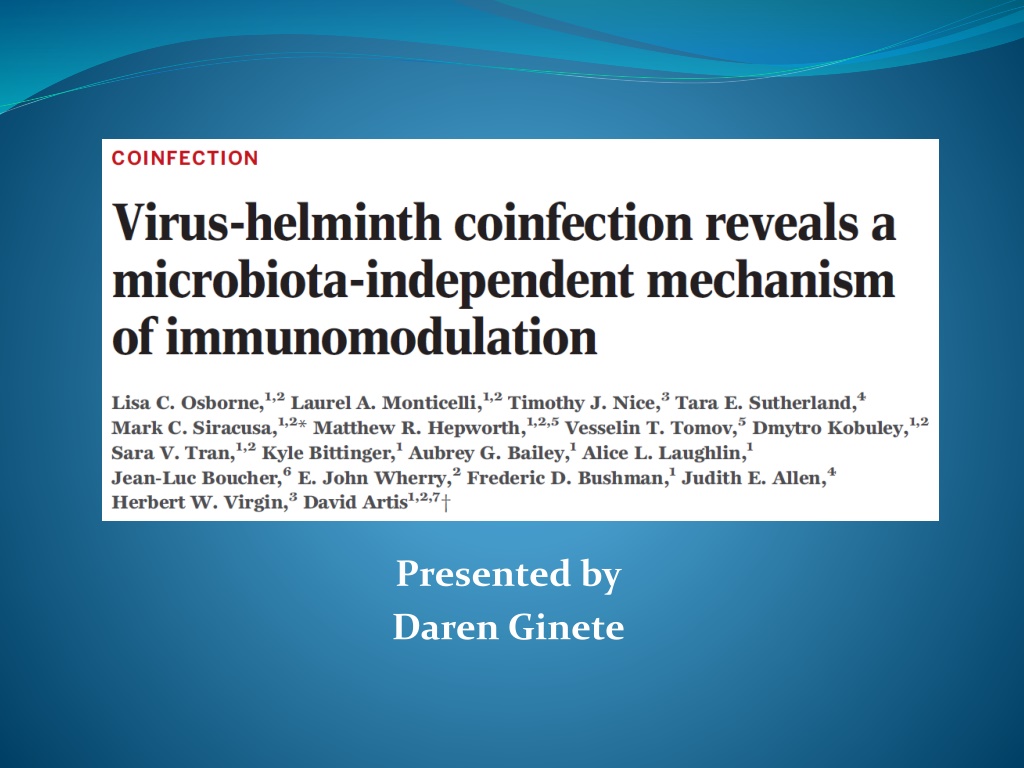


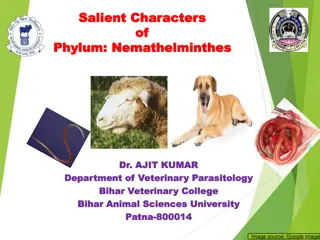
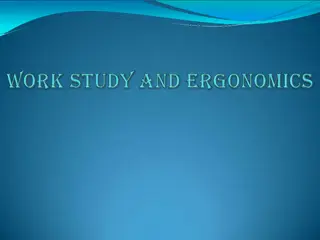

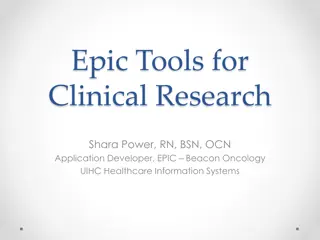




![Comprehensive Case Study on [Insert Case Title Here]](/thumb/159705/comprehensive-case-study-on-insert-case-title-here.jpg)


